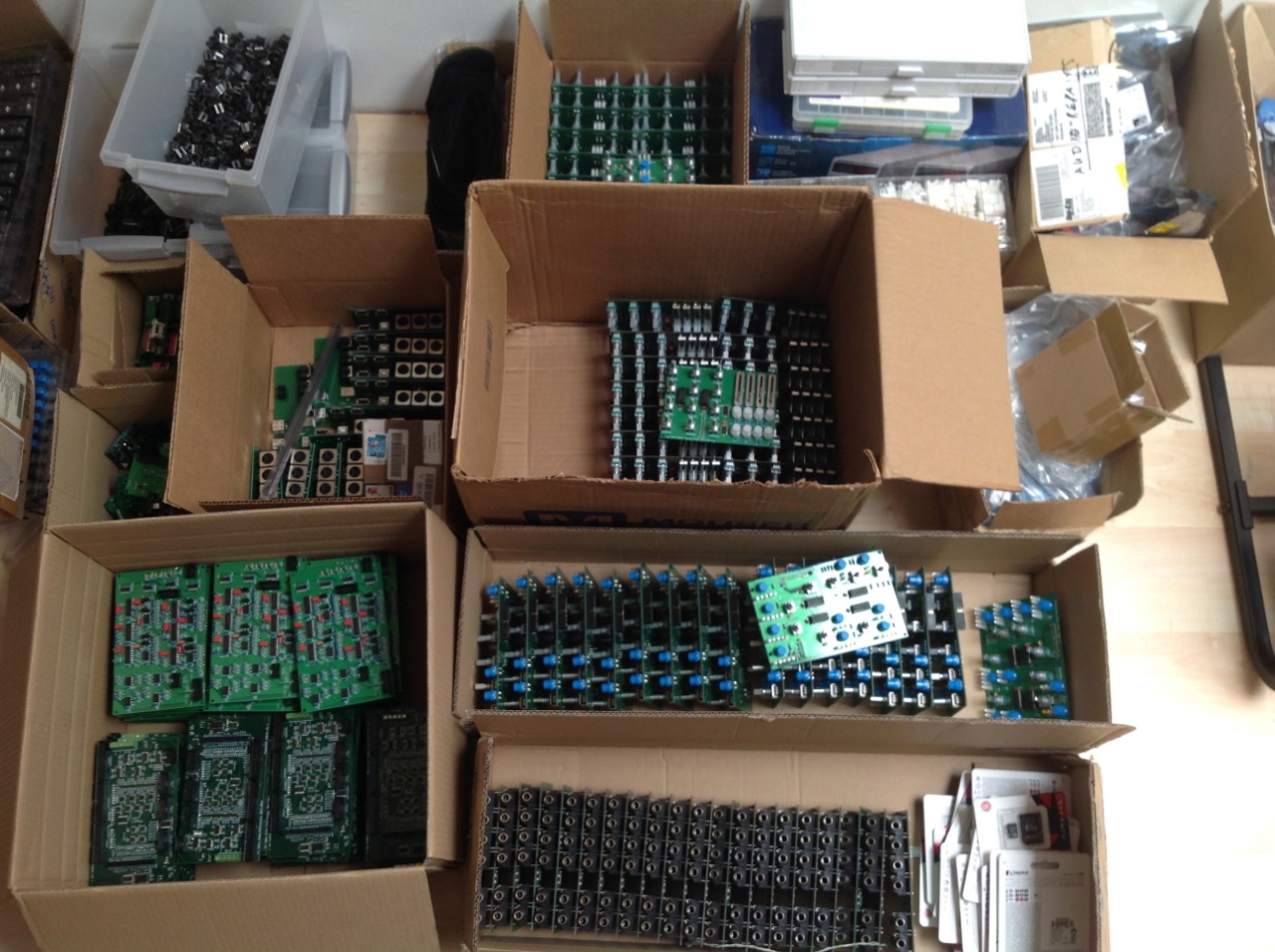ST4 – Electronics production done

Take a good look. Yes, all those PCB’s have been assembled. And over half of them in-house. That means we just have to hook it all up and test it.
On other fronts: the firmware has progressed nicely. Apple USB keyboards are now supported, German keyboard layout is supported, and it looks like UK is up next. If you have a kayboard layout you want to see supported, you can send it to us and we’ll code it! tastychipselectronics@gmail.com.
USB hubs are (somewhat) supported, which opens doors to new avenues like USB MIDI controllers. The tracker now features half and double speed options. The display has the feature to show multiple controls (up to 4) at the same time, and controls have set points. Huge amounts of features to control the signal path have been added: LFO sync, LFO cross modulation, frequency controllable LFO random noise, channels may be bundled in one big group (for instance, set cutoff for all channels with a single pot). Poly and mono (non-)legato modes are available. There’s now a PWM mode and LFO modulation can control it. That’s not all, LFO can also control bit crusher parameters!
We’re currently negotiating the casing with a number of factories. This is a lot time consuming as previously thought. The ST4 casing is multi-functional (desktop and 19″ rackmount), has a display and this involves a lot of details and choices to be made. When we’ve invested months and months in electronics and software, we’d like to do the same for the casing. We’ll see which ones comes out best. The cardboard box design now also has been done. The DIY manual is 95% finished and the user’s manual is about 70% complete.
In the meantime we’ll continue making the firmware better and better. Most features will be made available through the two onboard rotary encoders, not only through the USB keyboard. The goal is to have everything except sequencing and typing in names possible with on-board controls.
In short, it’s primarily casing stuff and firmware polishing from here on. Late august does seem somewhat feasible.
